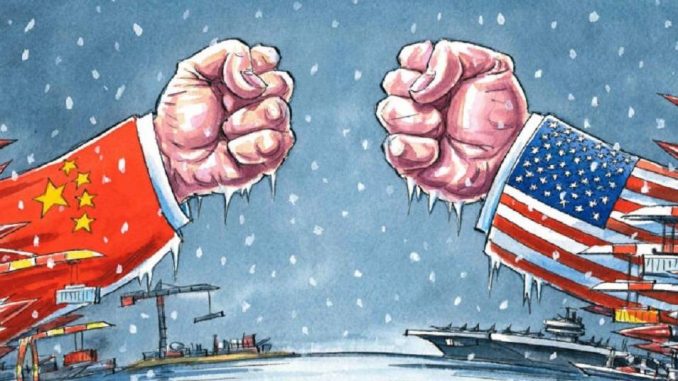
In a study released in 2024 by the Australian Institute of Strategic Policy (ASPI), it was revealed that, over 20 years, China has overcome the United States in 57 of the 64 technologies considered critical for global economic and military development. In 2007, the US led in 60 of these sectors, but currently keep the lead in just seven.
The study analyzed scientific and technological innovations based on high impact research and patents published by universities, research laboratories, private companies and government agencies.
According to the analysis, China stands out in a series of state -of -the -art areas, surpassing the US in essential sectors, such as the manufacture of advanced integrated circuits, high -specification machining processes, aircraft engines, drones, swarms of Collaborative robots, electric batteries, photovoltaic energy and advanced radio frequency communications.
On the other hand, the United States maintain a leadership position in only three areas: natural language processing, quantum computing and genetic engineering.
These technologies are related to high -complexity fields, but investigations point out that China has advanced considerably on these fronts, reducing the technological difference between the two countries.
The report attributes much of this progress to the technological development strategy “made in China 2025”, implemented by President XI Jinping.
The initiative aims to raise China to the leadership position in various technological areas, focusing on research and development (R&D) in key sectors.
The Chinese government has invested massively in R&D, providing a significant flow of direct state funding to the advancement of emerging and disruptive technologies, transforming these investments into a strategic plan to achieve “technological supremacy”.
China recently has also had a major impact on the artificial intelligence sector with the launch of DeepSeek, an AI system that offers a higher cost of a significantly lower cost compared to established competitors, such as OpenAi’s developed ChatgPT.
Deepseek, besides being faster and more affordable, is also open source, which has generated concern in Silicon Valley, where many technological companies have been challenged by the speed of Chinese advancement in this sector.
The launch of DeepSeek caused a negative reaction in financial markets, with the Nasdaq Composite index, which follows the actions of US technology companies, registering a drop of over 3% on January 28, 2025.
Some companies in the sector, particularly those involved with artificial intelligence, faced losses of up to 17% on their actions, reflecting the impact of the growing popularity of the Chinese Ia and its implications for the global market.
The change in the balance of global technological power, as illustrated by the study of ASPI, points to a reconfiguration of economic and political dynamics in the coming years.
China’s growing technological advantage in various key areas can directly influence the international scenario, especially at a time when geopolitical tensions between the world’s two largest economies continue to increase.
This situation reflects China’s rapid rise as a leader in critical technologies, while the United States, who were once at the forefront of technological advancement, face the challenge of preserving their competitiveness against an increasingly innovative and assertive China in their development policies technological.
With the continuation of Chinese investment in strategic areas, including artificial intelligence, renewable energy, and advanced manufacturing, technological dispute between the two countries is expected to intensify even more, with significant implications for the future of commercial relations and global policies.
With information from Sputnik
Source: https://www.ocafezinho.com/2025/01/29/china-ja-supera-os-eua-em-quase-60-tecnologias-criticas/

